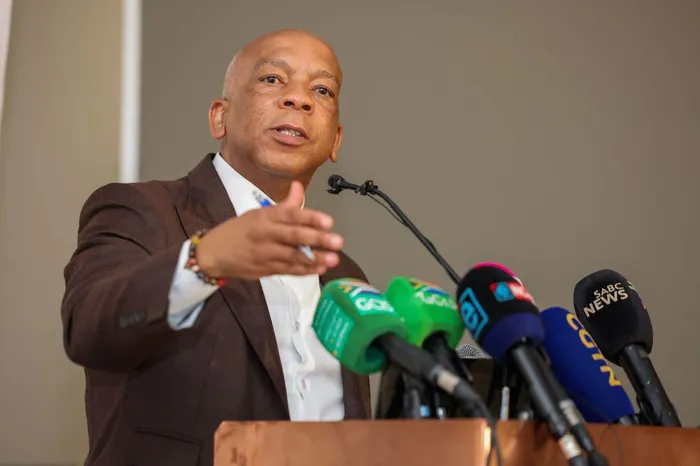South Africa embarks on new nuclear energy era with ambitious developments on PBMR

Minister of Electricity and Energy, Dr. Kgosientsho Ramokgopa, announces South Africa's nuclear revival plans during a media briefing in Hatfield.
Image: GCIS
South Africa is stepping into a new era of nuclear energy, with Minister of Electricity and Energy, Dr. Kgosientsho Ramokgopa, announcing significant developments in the country’s nuclear program, including the lifting of the Pebble Bed Modular Reactor (PBMR) from care and maintenance and the extension of Koeberg Unit 2 operations.
Speaking during media briefing on Sunday in Hatfield, Ramokgopa said the move marks a decisive step towards revitalising South Africa’s nuclear capabilities and contributing to global nuclear technology innovation.
“The need for us to beneficiate the critical minerals that are going to underpin the decarbonization agenda is going to rely on clean baseload technologies, and nuclear is going to feature significantly,” he said.
“As a country, we say we are not going to be left behind. We have built a body of knowledge over time.”
The PBMR, previously on hold, will now resume active development, allowing South Africa to expand its role in the nuclear fuel cycle and Small Modular Reactor (SMR) technology.
“So, what this decision really is going to enable is the PBMR, that we can reopen the fuel development laboratories to undertake the research and development. We’re reopening these development laboratories and making sure that scientists get to participate in this space,” Ramokgopa said.
Eskom has also received approval for a 4000 MW nuclear build at the Duynefontein site and a 20-year license extension for Koeberg Unit 2, ensuring its operations until November 2045.
“The two units will operate until 2044. So, it’s important that the spent fuel gets to be stored off-site, and that’s what Enroadi will be doing,” the Minister added, referring to the National Radioactive Waste Disposal Institute.
On the financial commitment for nuclear waste storage, Ramokgopa said: “We are going to be investing up to 2.1 billion rents for purposes of establishing what we call the Central Interim Storage Facility, which will be designed to also store the spent fuel.”
Ramokgopa emphasised the program’s broader industrial and research implications.
“We think that is going to answer also our industrialization ambition. And the fact that the IRP says they are going to take part of the new nuclear build program, this is going to ensure that the program may go into the future.”
The Minister highlighted South Africa’s potential to become a global player in nuclear fuel supply, particularly for high-temperature reactors.
“Enjoy a monopoly. With the introduction of the work that we are doing, we are going to be another player in that space. So, there’s a commercial proposition that we’re making, that South Africa has consistently advanced about nuclear.”
He further stressed the program’s contribution to medicine and cancer treatment.
“We are not looking for nuclear simply for purposes of electricity generation, but also for purposes of medicinal purposes, the issues of oncology. We account for about 20% of the supply of isotopes across the globe.”
The Minister said that these steps will also help address electricity demand, create high-end skills, and strengthen industrial capacity on the continent.
IOL News
Get your news on the go. Download the latest IOL App for Android and IOS now.
Related Topics: